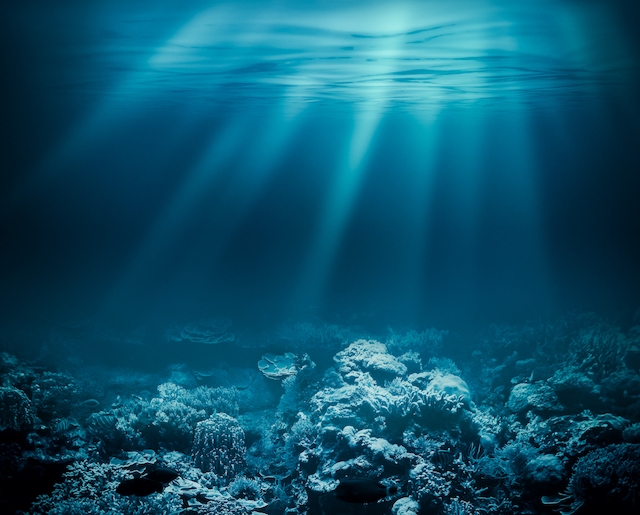
A new study that has just been published in Nature. It describes research that investigated how life is responding to climate change and ocean warming.
Just before we leap in, permit me to define a term deployed – “climate velocity”. This is the speed at which species will need to migrate in order to stay in the same enveloped climatic condition.
Nature: Climate velocity reveals increasing exposure of deep-ocean biodiversity to future warming
Published on May 26, the paper challenges an existing notion – The slower warming in the deep ocean encourages a perception that its biodiversity is less exposed to climate change than that of surface waters. This paper however reveals something different, they have calculated climate velocity and discovered this …
We find that contemporary (1955–2005) climate velocities are faster in the deep ocean than at the surface.
Moreover, projected climate velocities in the future (2050–2100) are faster for all depth layers, except at the surface, under the most aggressive Greenhouse Gas mitigation pathway considered (representative concentration pathway, RCP 2.6).
This suggests that while mitigation could limit climate change threats for surface biodiversity, deep-ocean biodiversity faces an unavoidable escalation in climate velocities, most prominently in the mesopelagic (200–1,000 m). To optimize opportunities for climate adaptation among deep-ocean communities, future open-ocean protected areas must be designed to retain species moving at different speeds at different depths under climate change while managing non-climate threats, such as fishing and mining.
Study Author comments
Isaac Brito-Morales, lead researcher …
“We used a metric known as climate velocity which defines the likely speed and direction a species shifts as the ocean warms,” Mr Brito-Morales said.
“We calculated the climate velocity throughout the ocean for the past 50 years and then for the rest of this century using data from 11 climate models.
“This allowed us to compare climate velocity in four ocean depth zones – assessing in which zones biodiversity could shift their distribution the most in response to climate change.”
“However by the end of the century, assuming we have a high-emissions future, there is not only much greater surface warming, but also this warmth will penetrate deeper,” Mr Brito-Morales said.
“In waters between a depth of 200 and 1000 metres, our research showed climate velocities accelerated to 11 times the present rate.
“And in an interesting twist, not only is climate velocity moving at different speeds at different depths in the ocean, but also in different directions which poses huge challenges to the ways we design protected areas.”
Senior researcher UQ’s Professor Anthony Richardson …
“Significantly reducing carbon emissions is vital to control warming and to help take control of climate velocities in the surface layers of the ocean by 2100,” he said.
“But because of the immense size and depth of the ocean, warming already absorbed at the ocean surface will mix into deeper waters.
“This means that marine life in the deep ocean will face escalating threats from ocean warming until the end of the century, no matter what we do now.
“This leaves only one option – act urgently to alleviate other human-generated threats to deep-sea life, including seabed mining and deep-sea bottom fishing.
“The best way to do this is to declare large, new protected areas in the deep ocean where damage to ocean life is prohibited, or at least strictly managed.”
Further Reading – Ocean Warming
- Nature: Climate velocity reveals increasing exposure of deep-ocean biodiversity to future warming
- Press Release University of Queensland – The deep ocean is warming slowly – but dramatic changes are ahead
